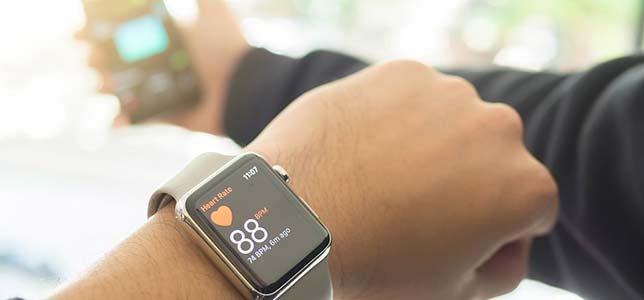Wearables
Smartwatches Overtake Fitness Trackers

Shipments of wearable devices continued to improve in the second quarter of 2017, showing a 10.3 percent improvement over the same period last year, according to a new report from International Data Corp. (IDC).
The quarter saw 26.3 million shipments and was also the first period in which basic wearables — those that do not run third-party apps — saw a decline with negative 0.9 percent growth year over year. Smartwatches, on the other hand, saw strong growth at 60.9 percent.
"The transition towards more intelligent and feature-filled wearables is in full swing," said Jitesh Ubrani senior research analyst for IDC Mobile Device Trackers, in a prepared statement. "For years, rudimentary fitness trackers have acted as a gateway to smartwatches and now we're at a point where brands and consumers are graduating to a more sophisticated device. Previous niche features such as GPS and additional health tracking capabilities are quickly becoming staples of the modern smartwatch. Just a year ago only 24.5 percent of all wearables had embedded GPS while today that number has reached almost 41.7 percent."
Xiaomi led the market with 3.5 million shipments far a share of 13.4 percent. That's an improvement from the same period in 2016, when the company shopped 3.1 million devices for a 13 percent market share.
"Xiaomi maintained its lead in the second quarter as the company's expertise in driving low-cost devices remains unmatched," according to a press release. "Though the Mi Band lineup was the most popular, Xiaomi also caters to the growing market of kids' devices and recently shipped its first pair of smart shoes under the Mijia brand. Shipments for the shoes were immaterial during the quarter though IDC anticipates this to gradually grow as Xiaomi gains traction in the clothing/apparel industry."
Apple is right behind Xiaomi with 3.4 million shipments in the quarter and a 13 percent market share. That's up from a 9.6 percent share in the second quarter of 2016, when the company sold 2.3 million devices.
"Apple's growth continued to outpace the market as the Series 1 and Series 2 are now mature products with the clear and concise purpose of fitness," according to IDC. "This has boded well for Apple as the company has been slowly expanding its reach among health insurance providers. The release of the latest Watch OS later this year is also expected to bring much anticipated features like a Siri watch face to the wrist."
FitBit also sold 3.4 million units and holds a market share of 12.9 percent. That marks a year-over-year decline of 40.9 percent for the company, which sold 5.7 million units and held 24.1 percent of the market in the same period last year.
"Fitbit finds itself in a period of transition," according to information released by IDC. "Early leaks and the recent official announcement of the Fitbit Ionic will help cement the company's place in the growing smartwatch market. However, short-term growth remains challenged as the product portfolio is vast and undifferentiated."
Garmin saw its market share drop from 6.4 to 5.4 percent while shipments remained mostly stagnant, falling slightly from 1.5 million shipments in last year's second quarter to 1.4 million shipments in the second quarter of 2017.
"Garmin's decline of 6.6 percent from last year should not necessarily be seen as a negative as the company has managed to grow revenue. Transitioning existing users from basic fitness trackers to more advanced smartwatches like the Fenix lineup has worked well for the company. Recent developer outreach has also allowed Garmin's ConnectIQ platform to branch outside health and fitness."
Rounding out the top five vendors is Fossil, with 1 million shipments and 4 percent of the market. The company sold just 300,000 wearable devices during the second quarter of 2016 and held a share of 1.4 percent of the market.
"Fossil entered the top 5 for the first time and much of this is credited to the acquisition of Misfit in late 2015," according to an IDC news release. "With a large distribution network of fashion stores and multiple brands Fossil managed to attract a previously unaware audience to the wearables market. While smartwatches from Michael Kors and Fossil took center stage, the company's hybrid watch lineup also gained traction."
"Market growth favored new and emerging products in the second quarter," said Ramon Llamas, research manager for IDC's Wearables team, in a prepared statement. "Smartwatches recorded double-digit year-over-year growth, with much of that increase attributable to a growing number of models aimed at specific market segments, like the fashion-conscious and outdoor enthusiasts in addition to the technophile crowd, lower price points, and a slowly-warming reception from consumers and enterprise users alike. Factor in how smartwatches are taking steps to become standalone devices, and more applications are becoming available, and the smartwatch slowly becomes a more suitable mass market product."
About the Author
Joshua Bolkan is contributing editor for Campus Technology, THE Journal and STEAM Universe. He can be reached at [email protected].